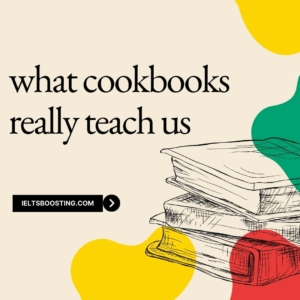Describe a book that you have read many times
You should say:
- What the book is
- What is in this book
- How often you read this book
- Why you read it
- And explain what effect the book has on you

Describe a book that you have read many times
Sample answer for describe a book that you have read many times
One of the books I have read many times is “How to Win Friends and Influence People” by Dale Carnegie, which is a classic self-help book that delves into the art of interpersonal relationships and communication. I have read this book several times over the years, probably at least three or four times, and each time I revisit it, I gain new insights and reminders about the principles of effective communication and building positive relationships.
I chose to read “How to Win Friends and Influence People” because it offers valuable guidance on how to interact with people in a way that fosters understanding and cooperation. The book provides practical advice on various aspects of human interaction, including how to make people like you, how to handle disagreements, and how to influence others positively. It is a timeless resource for anyone seeking to improve their social skills and enhance their ability to connect with others.
The effect this book has had on me is profound. Not only has it equipped me with practical tools for dealing with people, but it has also changed my perspective on human interactions. I’ve become more empathetic and attentive to others’ needs and feelings. I’ve learned to listen actively and show genuine interest in people, which has helped me build stronger relationships both personally and professionally.
Explore more: ielts speaking part 2

what cookbooks really teach us
Part 3 for describe a book that you have read many times
What kinds of books do children like to read? Why?
Children often enjoy reading books that are rich in imagination and adventure. These kinds of stories captivate their minds, allowing them to explore worlds beyond their own, which is crucial for their cognitive development and creativity. For example, fairy tales like ‘Cinderella’ captivate children because they combine elements of imagination and adventure relating to human experiences and emotions. The blend of fantasy and moral lessons is why such stories remain timeless favorites among young audiences.
- Captivate: To attract and hold the interest and attention of someone.
- Cognitive Development: The growth of a range of mental processes and abilities like learning, reasoning, and problem-solving.
- Creativity: The use of imagination or original ideas to create something; inventiveness.
- Fairy Tale: A story for children involving magical events and imaginary creatures.
- Imagination: The faculty or action of forming new ideas, images, or concepts not present to the senses.
- Moral Lessons: The principles contained within a story or event that are meant to teach about what is right and wrong in behavior.
- Timeless: Not affected by the passage of time or changes in society, remaining universally understood and appreciated.
- Relatable: Being able to be related to, especially through shared experiences or conditions.
- Fantasy: A genre of speculative fiction set in a fictional universe, often inspired by real world myth and folklore.
- World-building: The process of constructing an imaginary world, sometimes associated with a whole fictional universe.
What can kids learn from books?
Children can develop critical thinking and problem-solving skills through reading books.Reading encourages children to think creatively and consider different perspectives when characters face challenges or dilemmas. For example, in the book “Harry Potter and the Sorcerer’s Stone” by J.K. Rowling, young readers follow Harry and his friends as they solve mysteries and overcome obstacles at Hogwarts School of Witchcraft and Wizardry. Additionally, when children are continuously exposed to language, this can help them develop language skills, which are important for social interaction.
Do people prefer to read e-books or printed books in your country?
Well, the preference for reading materials in my country is quite diverse and depends largely on people’s interests and habits. It’s not a one-size-fits-all situation. Generally, young people tend to lean towards e-books due to the accessibility and convenience they offer. With just one digital device, like an iPad or e-reader, they can have access to a wide variety of books at their fingertips. It’s especially handy for those who are always on the go.
On the other hand, older generations often have a deep-seated attachment to printed books. Many of them have grown up with traditional books, and they appreciate the tactile experience of holding a physical book in their hands. For some, there’s a sense of nostalgia and pleasure derived from the act of flipping through pages.
Do you think people need to develop the habit of reading? Why?
Yes, people need to develop the habit of reading because it offers numerous cognitive and personal benefits. Reading enhances one’s knowledge and vocabulary, which are essential for effective communication and understanding complex ideas. It fosters empathy by allowing readers to immerse themselves in the experiences and emotions of characters, promoting a deeper understanding of human nature.
Do you think reading books can make people happier?
Yes, reading books can contribute to people’s happiness as it provides an escape from daily stressors and offers a sense of fulfillment. Reading books helps people immerse themselves in the stories of the book and forget the stresses of daily life. In addition, some self-help books offer valuable advice, and readers may strive to become better versions of themselves. Furthermore, for many people, reading books is considered a hobby that brings them emotional satisfaction and joy, enhancing their overall happiness
Do you think e-books will make people read more? Why?
Yes, e-books have the potential to encourage people to read more because of their accessibility and convenience. E-books can be easily downloaded and read on digital devices, eliminating the need to carry physical books. Many e-books are affordable or even free, making them more accessible to a wider audience and reducing financial barriers to reading. For example, with the introduction of the iPad, many people in Japan developed a habit of reading books. the availability of accessing and storing many books in one device encouraging reading habit.

